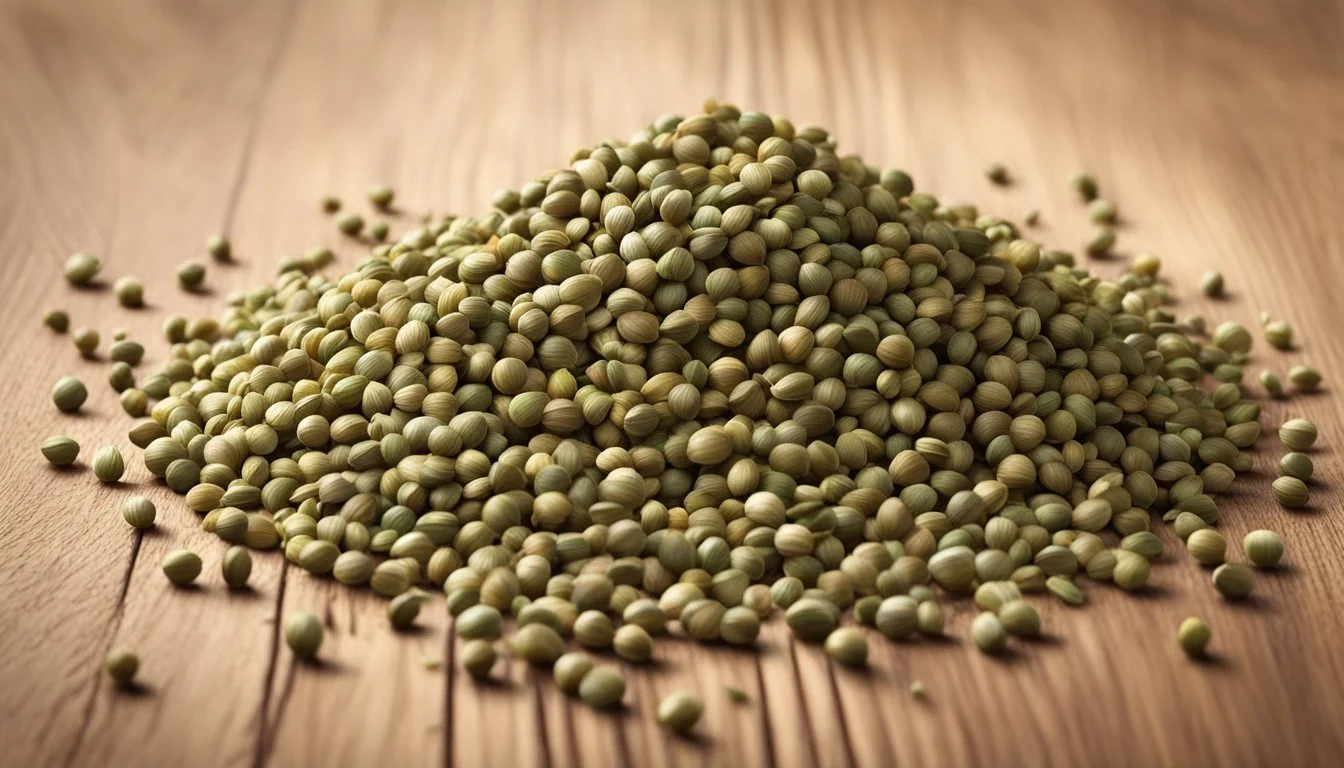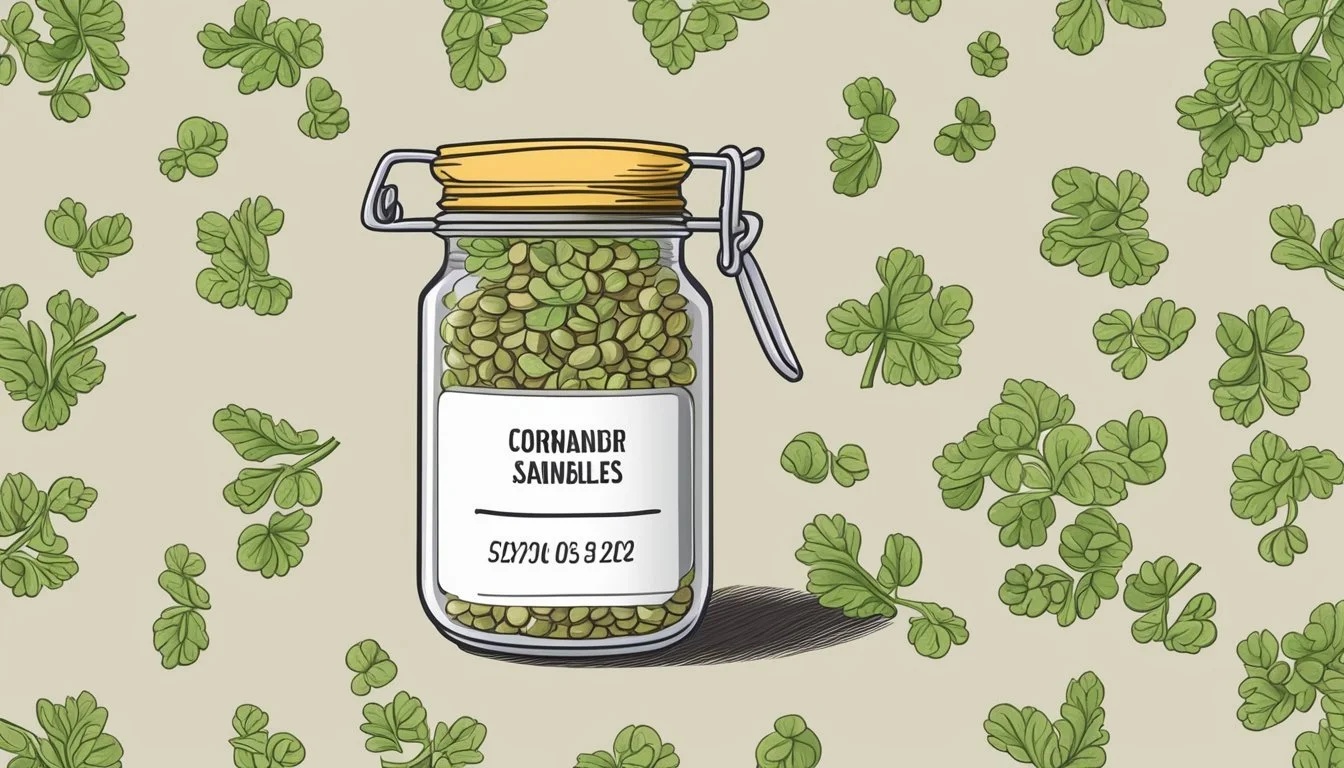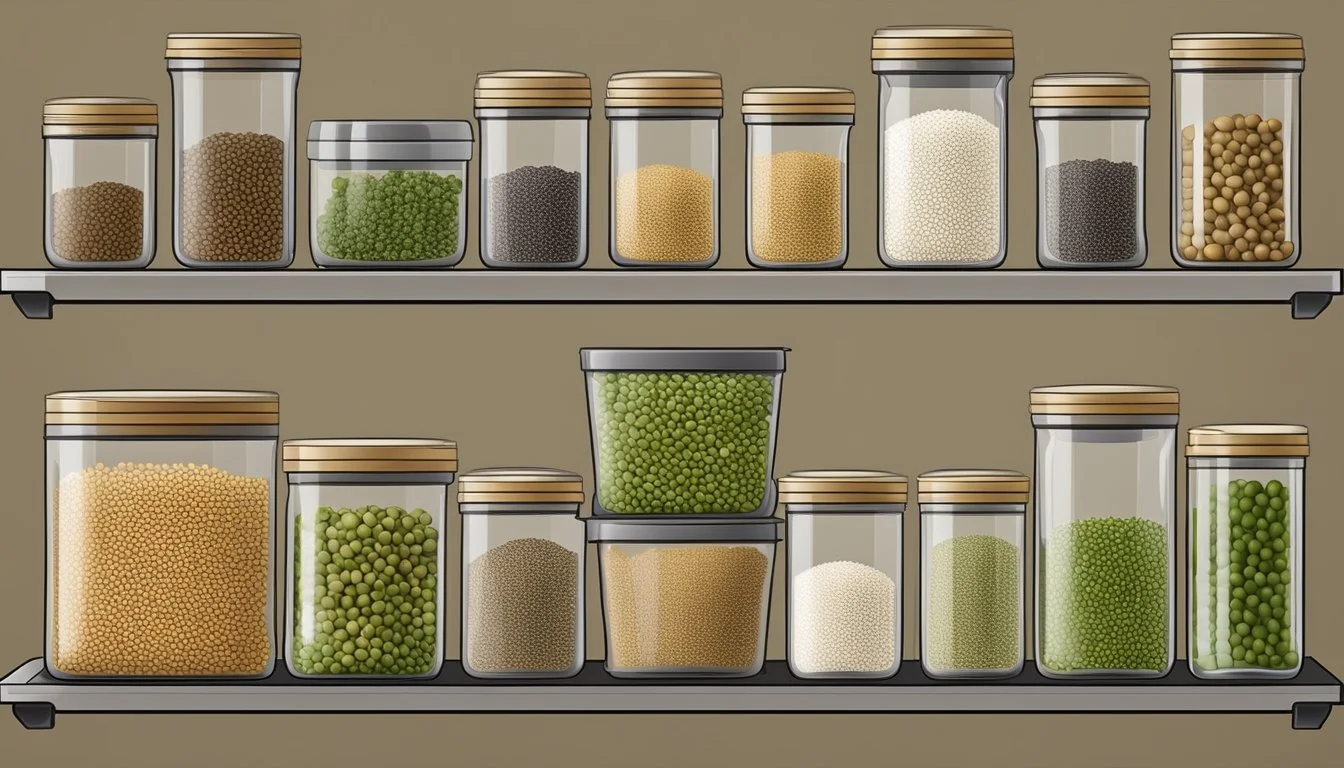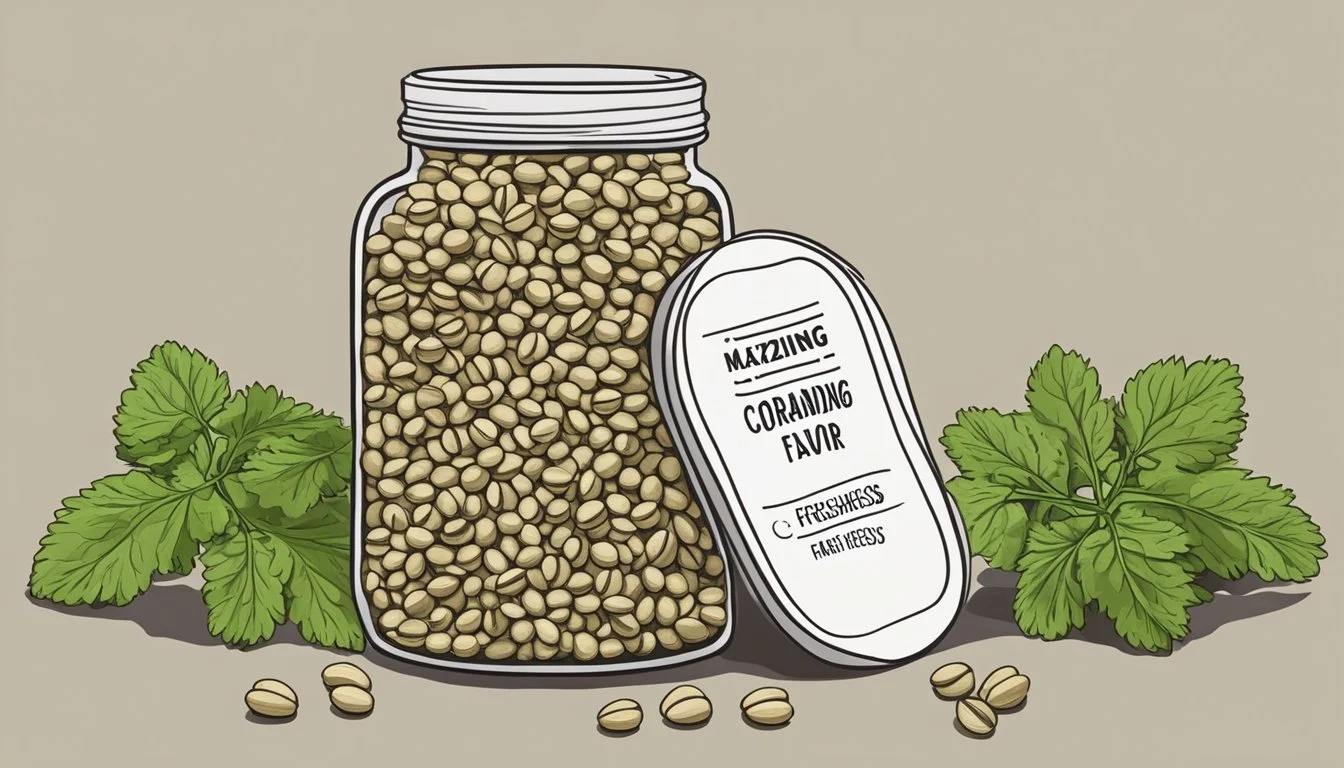Do Coriander Seeds Go Bad?
Understanding Shelf Life and Storage Tips
Coriander seeds are a staple in many kitchens around the world, renowned for their warm, citrusy flavor and earthy aroma. But do these popular seeds ever go bad? Spices, including coriander seeds, don't truly expire but gradually lose their flavor, aroma, and potency. Whole coriander seeds can last up to 3-4 years when stored properly, making them a valuable addition to any culinary collection.
Proper storage is key to maintaining the quality of coriander seeds. Airtight containers placed in a cool, dark place can help preserve their freshness. Ground coriander, due to its increased surface area, generally has a shorter shelf life of about 2-3 years. Both forms, when stored correctly, ensure that meals retain their intended depth of flavor.
For those growing coriander plants at home, harvesting seeds provides the freshest and most potent option. Collecting seeds at the right time ensures they remain viable for longer periods. Whether using whole or ground variants, coriander seeds add a distinct touch to various dishes, enhancing the overall culinary experience.
Understanding Coriander Seeds
Coriander seeds, derived from the coriander plant (also known as cilantro), come in different forms and boast significant nutritional and culinary importance. They can be used both whole and ground, each offering unique benefits and applications.
Different Forms of Coriander
Coriander can be found in multiple forms such as whole seeds, ground coriander, and fresh coriander leaves.
Whole coriander seeds are small, round, and light brown. They have a more prolonged shelf life, maintaining potency for up to 3-4 years if stored in cool, airtight containers. These seeds are often toasted or fried to release their aromatic oils before being added to dishes.
Ground coriander is made by crushing the seeds into a fine powder. It tends to lose its potency faster and typically lasts 2-3 years when stored properly. Ground coriander is commonly used in spice blends and marinades because of its ease of use.
Fresh coriander leaves, also known as cilantro, offer a vibrant flavor and are used as a garnish or seasoning in numerous dishes.
Nutritional and Culinary Significance
Coriander seeds offer notable nutritional benefits, including essential oils that contain linalool and pinene, which contribute to their distinctive aroma and health properties.
They are also a good source of dietary fiber, vitamins A and C, and various minerals such as calcium, iron, and magnesium. These nutrients support digestive health, skin health, and overall vitality.
Culinarily, coriander seeds are used extensively in global cuisines. Their warm, citrusy flavor makes them a staple in spice mixes like garam masala and curry powder. They are also used in pickling, baking, and flavoring meats and vegetables.
Fresh coriander leaves add a refreshing taste to salads, soups, and sauces, enhancing the flavor profile of various dishes with their bright, slightly peppery notes.
Factors Affecting Shelf Life
The shelf life of coriander seeds depends on various elements such as temperature, light exposure, and moisture levels. Proper storage can significantly extend their potency and flavor.
Temperature and Storage Conditions
Temperature plays a crucial role in maintaining the quality of coriander seeds. Storing them in a cool, dark, and dry location prolongs their shelf life. Ideally, they should be kept at room temperature or slightly below. High temperatures can accelerate the degradation of the volatile oils responsible for their aroma and flavor. Therefore, a pantry away from heat sources is optimal. Airtight containers further protect the seeds from temperature fluctuations and external contaminants.
Exposure to Light and Air
Exposure to light and air can significantly reduce the shelf life of coriander seeds. Light, especially direct sunlight, can lead to photodegradation, causing loss of flavor and potency. Air exposure can oxidize the oils in the seeds, diminishing their aromatic qualities. Using opaque, airtight containers can mitigate these issues by blocking light and minimizing air exchange. Proper sealing can also prevent contamination from external odors and elements.
Moisture and Humidity Control
Coriander seeds are highly sensitive to moisture and humidity. Excess moisture can lead to mold growth and spoilage. Humidity fluctuations can also cause the seeds to lose their crisp texture. Storing coriander seeds in a dry environment is paramount. Using desiccants or moisture-absorbing packets within containers can aid in maintaining a stable, low humidity level. This ensures the seeds remain dry and viable for a longer period.
Proper storage practices are key to preserving the quality of coriander seeds. By paying attention to temperature, light, and moisture, one can significantly extend their shelf life and maintain their aromatic properties.
Proper Storage Techniques
To maximize the freshness and potency of coriander seeds, follow specific storage techniques. Key aspects include choosing between whole and ground seeds, using airtight containers, and considering refrigeration and freezing when necessary.
Storing Whole versus Ground Seeds
Whole coriander seeds retain their aroma and flavor longer than ground seeds. Whole spices have a lower surface area exposed to air, which helps preserve the essential oils.
Ground coriander tends to lose its potency quickly. It is advisable to grind coriander seeds just before use. For those who prefer convenience, store ground coriander in a tightly sealed container to minimize exposure to air, moisture, and light.
Utilizing Airtight Containers
Storing coriander seeds in airtight containers is crucial to maintaining their freshness and quality. Airtight containers create a barrier against air, moisture, and pests.
Glass jars with tight-fitting lids or sturdy metal containers are ideal choices. Avoid plastic containers as they might not seal properly and can allow air penetration. Place the container in a cool, dark place to further protect the seeds' volatile oils from being broken down by light and heat.
Refrigeration and Freezing Options
For extended storage, consider refrigeration or freezing. Refrigeration is an excellent option for storing whole coriander seeds, especially in humid environments. Ensure the seeds are in an airtight container to prevent moisture absorption.
Freezing can also be effective in preserving the potency of whole coriander seeds. Use a suitable freezer-safe container, such as a glass jar or heavy-duty plastic bag with an airtight seal. When needed, thaw small amounts to avoid repeated freezing, which can degrade flavor over time.
Identifying Spoilage
Coriander seeds, when stored properly, can last for years. However, there are distinct signs to identify when these seeds have gone bad, which include changes in their appearance, smell, and risks associated with using spoiled spices.
Visual and Olfactory Indicators
Fresh coriander seeds should retain their original size and color. When inspecting them for spoilage, check for any browning or discoloration.
Brown or dark spots might indicate deterioration. Seeds that have clumped together are also a red flag.
Mold is another key indicator. If you notice any fuzzy white or green growth on the seeds, this is a sign of spoilage, and they should be discarded immediately.
Smell the seeds: fresh coriander seeds will have a strong, spicy aroma. If the scent is weak or off, it means the seeds have likely lost their potency and freshness.
Potential Risks of Using Spoiled Spices
Using spoiled coriander seeds can impact the quality and taste of your dishes. The flavor and aroma of the seeds degrade over time, and using old or spoiled seeds can result in stale or bitter flavors.
Spoiled seeds may also harbor mold, which could pose health risks.
Packaged seeds should be used before their expiration date. Always store them in a cool, dark place to maximize their shelf life and avoid spoilage. By regularly checking coriander seeds for the above indicators, you can ensure that you are using fresh, high-quality spices in your cooking.
Maximizing Flavor and Freshness
To maximize the flavor and freshness of coriander seeds, it's essential to understand best practices for both harvesting and buying them, as well as effective grinding techniques that will maintain their potency.
Best Practices for Harvesting and Buying
Selecting fresh seeds during peak harvest can significantly impact the flavor profile. Coriander seeds are often at their best when harvested just after the flowers have turned brown and slightly brittle. For those purchasing seeds, opt for whole, unbroken seeds as these are likely to retain their pungency and aroma longer.
When buying from a store, check that the seeds are uniform in color and free from moisture or any signs of mold. Transparent packaging can help in visually inspecting the quality, but opaque containers often preserve freshness better. Timing matters; it's preferable to buy spices in smaller quantities that can be used up within a few months to avoid long storage periods in the spice cabinet.
Effective Grinding Techniques
Grinding coriander seeds just before use can vastly enhance their flavor and aroma. For the best results, use a dedicated spice grinder. Electric grinders can provide a fine, consistent grind, ideal for blending into-seasonings with ingredients like ginger, garlic, and lemon.
If a grinder is unavailable, a mortar and pestle can work well, though it requires more effort. Manually grinding allows for control over the coarseness, which can be preferable in certain culinary applications such as rubs for meats. Avoid grinding large quantities all at once, as ground coriander loses its potency relatively quickly.
Store ground coriander in an airtight container away from direct sunlight to maintain its pungency and freshness longer. A dark, cool place within the spice cabinet is ideal for preserving ground spices.
Coriander in Culinary Traditions
Coriander seeds have been an essential spice in various cuisines, contributing unique flavors to dishes around the world. They can be toasted for enhanced aroma, paired with other spices, and used in both sweet and savory recipes.
Incorporation in World Cuisines
Coriander finds extensive use in Indian cooking, where it's a staple in curry powders and garam masala. Its warm, citrusy notes complement spicy and aromatic dishes. In Thai cuisine, coriander seeds are integral to pastes that form the base for many soups and curries.
Mexican dishes benefit from ground coriander in salsa and marinade recipes, adding depth to flavors. In the Mediterranean, particularly in Morocco, it's used in spice blends like ras el hanout, enhancing tagines and meat dishes.
Pairing with Other Spices and Ingredients
Toasting coriander seeds before grinding intensifies their flavor, making it a perfect pairing with garlic and ginger in many recipes. When combined with lemon or salt, it adds a zest that brightens dishes. In spice mixes, it balances the heat of chili and the sweetness of cinnamon or allspice.
Coriander works well with a variety of ingredients, elevating the taste of soups, stews, and baked goods. Its versatility makes it a valuable component in any spice rack.








